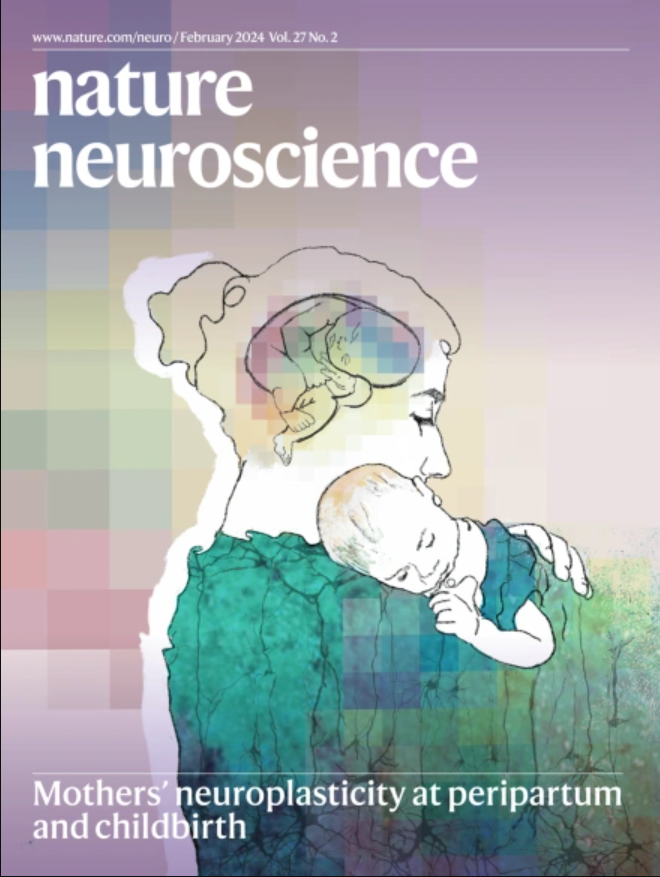Differential synaptic depression mediates the therapeutic effect of deep brain stimulation.
IF 20
1区 医学
Q1 NEUROSCIENCES
引用次数: 0
Abstract
Deep brain stimulation (DBS) effectively treats drug-resistant neurological and psychiatric disorders, yet its mechanisms remain unclear. Here we show that high-frequency DBS of the subthalamic nucleus (STN), a common target for Parkinson's disease (PD), activates afferent axons while inhibiting STN neurons. These contrasting presynaptic and postsynaptic effects arise from a decrease in local neurotransmitter release with a larger decrease in glutamate than GABA, shifting the excitation/inhibition balance toward inhibition. Chemogenetic inhibition, but not excitation, of STN neurons mimics the therapeutic effects of DBS in 6-OHDA-lesioned PD mice. Acute and chronic bilateral chemogenetic STN inhibition restores motor function in a progressive PD mouse model. These findings suggest that inhibition of STN, caused by differential depression of glutamatergic and GABAergic synapses, is a key mechanism of therapeutic DBS. 'Chemogenetic DBS', direct chemogenetic inhibition of postsynaptic neurons, may offer a less invasive and more affordable alternative to electrical DBS for PD and other neurological disorders.差异突触抑制介导脑深部刺激的治疗效果。
深部脑刺激(DBS)有效治疗耐药神经和精神疾病,但其机制尚不清楚。在这里,我们发现丘脑下核(STN)的高频DBS(帕金森病(PD)的常见靶点)激活传入轴突,同时抑制STN神经元。这些突触前和突触后的对比效应源于局部神经递质释放的减少,谷氨酸的减少比GABA的减少更大,将兴奋/抑制平衡转向抑制。STN神经元的化学发生抑制,而不是兴奋,模拟DBS对6- ohda损伤PD小鼠的治疗效果。急性和慢性双侧化学发生STN抑制可恢复进行性PD小鼠模型的运动功能。这些发现表明,由谷氨酸能突触和gaba能突触的差异抑制引起的STN抑制是治疗性DBS的关键机制。“化学发生DBS”,直接化学发生抑制突触后神经元,可能为PD和其他神经系统疾病提供一种侵入性更小、更实惠的电DBS替代方案。
本文章由计算机程序翻译,如有差异,请以英文原文为准。
求助全文
约1分钟内获得全文
求助全文
来源期刊

Nature neuroscience
医学-神经科学
CiteScore
38.60
自引率
1.20%
发文量
212
审稿时长
1 months
期刊介绍:
Nature Neuroscience, a multidisciplinary journal, publishes papers of the utmost quality and significance across all realms of neuroscience. The editors welcome contributions spanning molecular, cellular, systems, and cognitive neuroscience, along with psychophysics, computational modeling, and nervous system disorders. While no area is off-limits, studies offering fundamental insights into nervous system function receive priority.
The journal offers high visibility to both readers and authors, fostering interdisciplinary communication and accessibility to a broad audience. It maintains high standards of copy editing and production, rigorous peer review, rapid publication, and operates independently from academic societies and other vested interests.
In addition to primary research, Nature Neuroscience features news and views, reviews, editorials, commentaries, perspectives, book reviews, and correspondence, aiming to serve as the voice of the global neuroscience community.
 求助内容:
求助内容: 应助结果提醒方式:
应助结果提醒方式:


